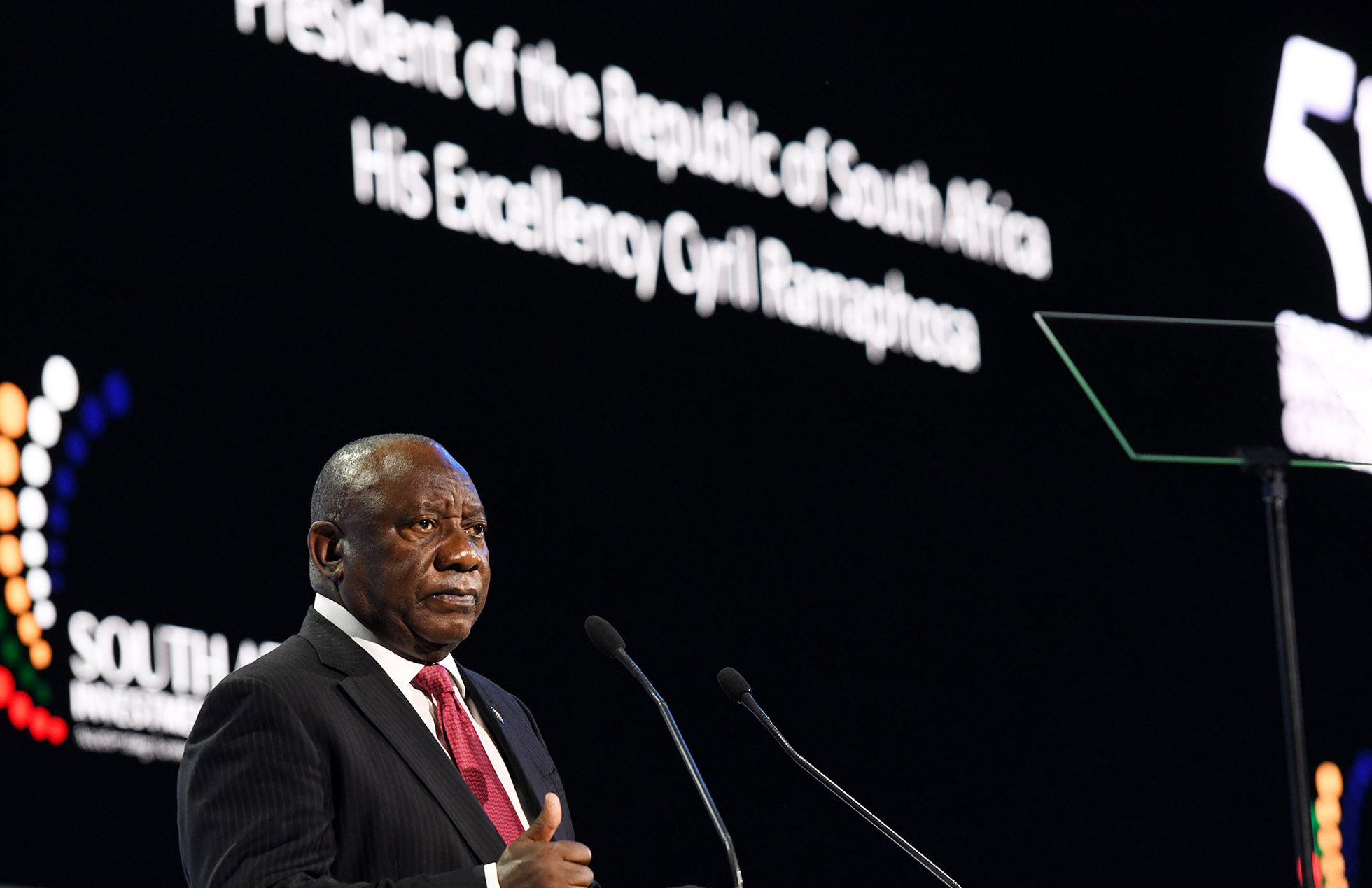President Cyril Ramaphosa urged international and domestic investors to continue backing South Africa and his new target of raising investments worth R2-trillion over the next five years despite a persisting power crisis that stifles the economy, dents confidence in the country and undermines investment levels.
Ramaphosa faced an uphill battle in convincing investors to pour new investments into the country as his administration has overseen power cuts that have become part of daily life, rampant crime and corruption, and failures in South Africa’s rail and port operations. South Africa is also seen by the world as a haven for money laundering, terrorist financing and other financial crimes after the country was recently greylisted by the Financial Action Task Force.
Read more in Daily Maverick: It’s official – South Africa fails to avoid greylisting
Ramaphosa opened the last leg of his investment conference on Thursday, a day when many parts of South Africa were thrown into a deeper level of blackouts (Stage 6). Ramaphosa addressed delegates in Sandton, speaking about his plans to ease the electricity crisis, while the swanky business district was plunged into four hours of load shedding.
The conference had a delayed start, with some delegates complaining about traffic congestion in Sandton, mostly caused by traffic lights that were off (again, due to blackouts).
In his speech to more than 1,000 delegates, Ramaphosa acknowledged that investor confidence in South Africa “has been tested” by rolling blackouts and the government’s inability to ease the crisis over the past 16 years.
“The lack of reliable energy supply weakens business and confidence. It also affects investments and confidence in South Africa,” he said.
Critics of his investment drive say many of the investment pledges are not new because companies were planning to roll them out anyway as part of their five- or 10-year capital allocation programmes.
“We are on a long journey to rebuild our country and recover the ground that we lost despite the challenges we have. Recovery will take time to accomplish. We are confident that we will recover.”
He added that South Africa still remains an “ideal investment destination”.
Arguably, many people would disagree with Ramaphosa considering that metrics that measure South Africa’s development are heading in the wrong direction.
Over the past 14 years South Africa has moved further away from the National Development Plan’s (NDP's) goal for fixed capital investments, which measures the level of investments in the country’s economy. The NDP targeted fixed capital investments to reach 30% of GDP by 2030. From a level of 22% of GDP in 2008, fixed capital investment levels fell to 20.3% in 2015 and further down to 17.9% in 2019.
The economy is barely growing at levels that are required to boost investments in the country, create jobs and improve the quality of life of citizens.
The World Bank’s latest forecast sees South Africa’s economy growing by 0.5% in 2023. The SA Reserve Bank forecasts growth of just 0.2%, while the International Monetary Fund sees growth of 0.1%.
Ramaphosa set a five-year target to raise R1.2-trillion in investments – a target he set in 2018 after he was elected President to replace Jacob Zuma, whose presidency decimated business confidence and investment spending. Ramaphosa said he reached this target and plans to get R60-billion in additional pledges from domestic and international investors to exceed his initial R1.2-trillion.
Of the R1.2-trillion investment pledges, about R460-billion of capital has been invested in building new factories, buying equipment, building roads, sinking mine shafts and rolling out broadband infrastructure, according to Ramaphosa.
Critics of his investment drive say many of the investment pledges are not new because companies were planning to roll them out anyway as part of their five- or 10-year capital allocation programmes. Many executives came to the investment conference simply to pledge investments that had already been budgeted.
Energy plans
To ease investor concerns about rolling blackouts, Ramaphosa repeated some of the energy plans that have been accepted by Cabinet, including removing the threshold for self-generation energy projects, procuring more wind and solar energy from private-sector players, offering tax incentives for businesses and households for installing solar energy systems, and pressing ahead with the Just Energy Transition Investment Plan.
The President also said the focus is improving the performance of Eskom’s coal-fired power stations “as they continue to provide a base load of energy in South Africa”.
 President Cyril Ramaphosa also announced a new visa regime to facilitate the entry of skilled labour into the country. (Photo: Jairus Mmutle / GCIS)
President Cyril Ramaphosa also announced a new visa regime to facilitate the entry of skilled labour into the country. (Photo: Jairus Mmutle / GCIS)
“Load shedding will remain a challenge in the immediate future but its severity will ease as the reforms are being put in place.”
On a separate matter, Ramaphosa announced a new visa regime to facilitate the entry of skilled labour into the country, and allow multinational companies to employ their own executives and technicians from outside the country.
This visa plan will include decentralising the adjudication of visa applications to foreign missions; streamlining application requirements to reduce the timeframes for obtaining a work visa; introducing a trusted employer scheme for qualifying companies; and establishing a points-based system to provide more flexible pathways for skilled applicants, in line with global best practice.
The government also plans to expand the e-Visa system to include an additional 20 countries over and above the 14 that are currently eligible, and will extend it to cover new visa categories such as study, business and intracompany transfer visas. DM/BM




 President Cyril Ramaphosa also announced a new visa regime to facilitate the entry of skilled labour into the country. (Photo: Jairus Mmutle / GCIS)
President Cyril Ramaphosa also announced a new visa regime to facilitate the entry of skilled labour into the country. (Photo: Jairus Mmutle / GCIS) 